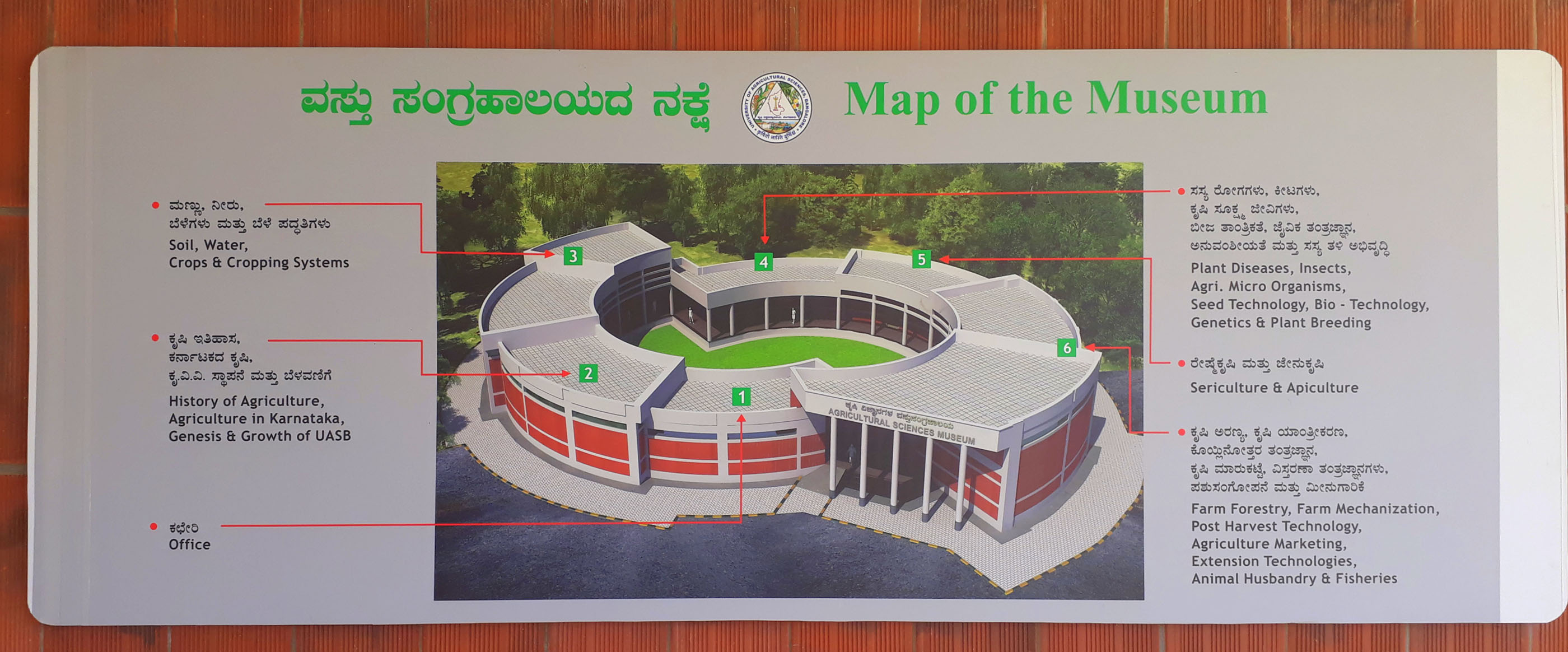The museum was established by the University of Agricultural Sciences (UAS) with the aim of:
- Tracing the origin and historical development of agriculture in human civilisation to preserve the agricultural heritage of the country
- Illustrating the genesis and expansion of the University of Agricultural Sciences
- Developing a better understanding and appreciation of the various stages of agricultural growth at a national and state level
- Showcasing contemporary issues and the latest technological developments and equipment in the field of agricultural science
The museum comprises of five main sections. The first section is dedicated to the history of agriculture and portrays the inception and growth of agriculture during the ancient civilisations of Mesopotamia, Egypt, Greece, Rome and the Indus valley. It depicts the prevailing agricultural practices of the Mauryan Empire, the Gupta Empire, the British era and the post-Independence era, and displays present-day techniques as well. It also charts out the various agricultural belts in Karnataka, the types of soil available throughout the state, historical records related to agriculture and laurels won by the University of Agricultural Science.
The second room displays information on soil, water and different types of crops and cropping systems. There are miniature models of farming tools like the plough, grain-harvesting and tillage equipment, tree-climbing equipment, a bio-gas plant setup and varieties of farm machinery. The third room exhibits facts related to apiculture and sericulture along with a collection of tools utilised in the production of honey.
The fourth section is dedicated to philately. This collection features stamps related to fruits, flowers, vegetables, birds, animals, renewable energy, food and agricultural organisations, agricultural education, farmers, World Food Day, etc. The last section demonstrates farm mechanisation, farm forestry, post-harvest technology, animal husbandry, agricultural marketing and the impact of climate change on agriculture and farming. All these are depicted through miniature models and information boards enclosed in glazed cases.
The corridor walls are adorned with images of fruits, flowers, animals and birds with suitable quotes on agriculture from famous personalities like Mahatma Gandhi, Sardar Vallabhbhai Patel, Pandit Jawaharlal Nehru, Rajiv Gandhi, Indira Gandhi, Dr A.P.J. Abdul Kalam, Dr P. Rajagopalachari and state poets like Kuvempu and Purandaradas. The courtyard is open to the sky, and has a farm-like setting with sculptures of grazing cows, cranes, farmers, bullock carts and a tractor.
13.0737598, 77.5912458

The map acts as a visual guide to the museum and provides descriptions of the various collections.
The room displays farming machinery along with different cropping systems.
The exhibit consists of a masked cap, glass bottles, equipment used for the extraction of honey, a box in which honey is stored and a few measuring tools.
The various stamp collections are hung on the walls of the room.
The collection consists of stamps from across the world. For example, a watermelon stamp from Bangladesh, a pineapple from Malaysia, a kiwi stamp from New Zealand, etc.
The collection consists of stamps related to various sources of renewable energy including solar, wind, hydro, biomass and biogas.
This collection shows different stamps with roses on them.
This particular exhibit talks about the new developments in farm mechanisation and post-harvest technology.
Open to the sky, the courtyard has a farm-like setting with sculptures of grazing cows and cranes along with a bullock cart.
Open to the sky, the courtyard has a farm-like setting with a farmer riding his tractor and a female farmer beside him.
